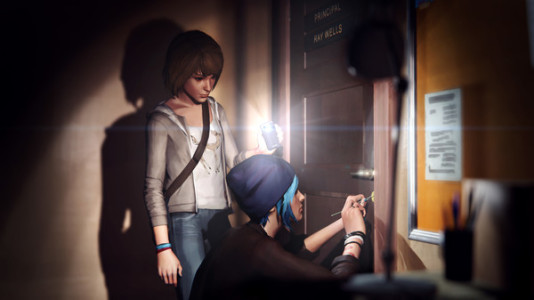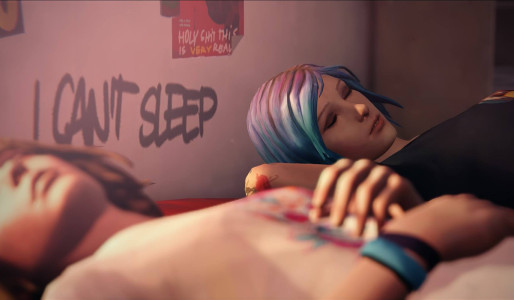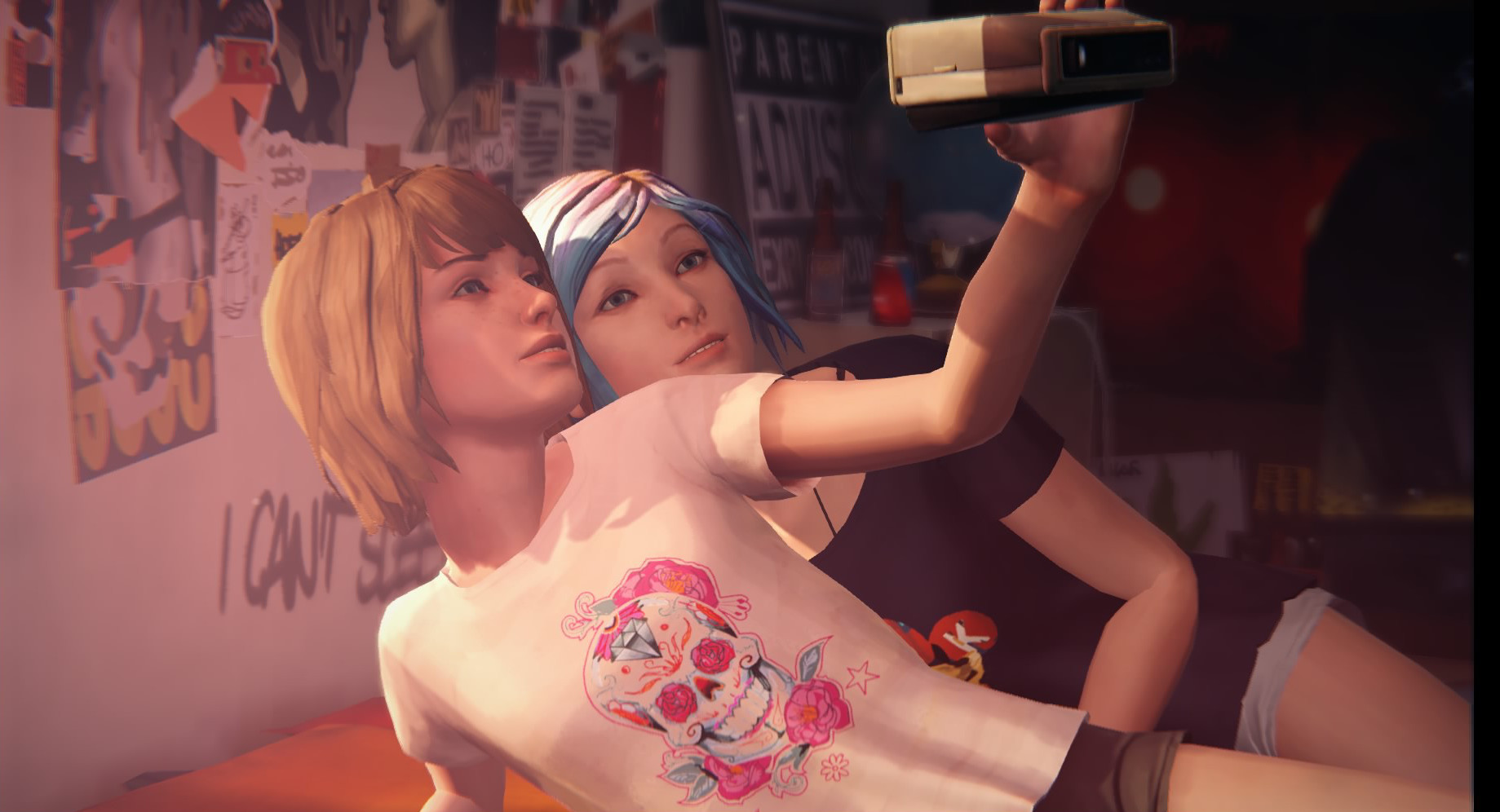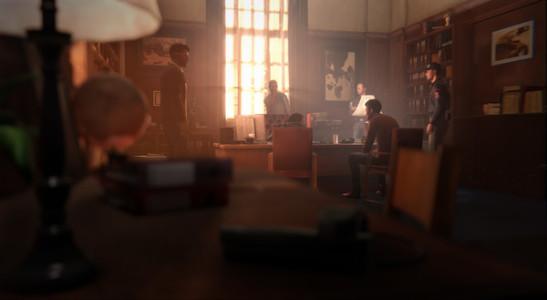A game has not made me this mad in some time, but Life is Strange Episode 3 is absolutely amazing.
My return to Arcadia Bay was the same as usual, charming, endearing, filled with calming music and a beautiful art style that has become the calling card of this title. The opening lines of dialogue were overblown, even cringe worthy at times. But even after these moments, the characters make fun of themselves for it, which is something indicative of the game as a whole. At times Life is Strange is bombastic and overblown, but immediately makes fun of itself for ever having been so. This is as important to Life is Strange as its music or art style.
Following some intensely traumatic events from episode 2, we meet a Max Caulfield who seems a bit drained. Kate Marsh, a troubled and bullied classmate of Max’s has recently tried (or succeeded depending on your choices) to commit suicide. Blackwell Academy, the prestigious High School of the arts, has come to a near standstill after this harrowing event. In the aftermath of all of this, Max continues to master her powers of time travel and help Chloe in the search for her missing friend. Chloe wrestles with her past and tries to tame her uncertain future, with you, her returned best friend, along for the ride.
 Chaos Theory continues the cartoon-y realism of it’s predecessors, yet a large part of the story is played at night, only lit by the flash of Max’s cellphone. After a few minutes in the dark I felt the beautifully realized world was being squandered. But in a very beautiful contrast, Chaos theory’s closing minutes are full of bright colors and beautiful sights. The game also does a wonderful job of reminding players to stop and appreciate the beauty of the world around them.
Chaos Theory continues the cartoon-y realism of it’s predecessors, yet a large part of the story is played at night, only lit by the flash of Max’s cellphone. After a few minutes in the dark I felt the beautifully realized world was being squandered. But in a very beautiful contrast, Chaos theory’s closing minutes are full of bright colors and beautiful sights. The game also does a wonderful job of reminding players to stop and appreciate the beauty of the world around them.
The score behind this game is as wonderful as ever. The mellow tunes that accompany gameplay, cutscenes and even in game menus radiant a sort of calm that is almost unexplainable. It instilled in me a certain nostalgia for my own teenage years, and brought out the inner angsty teen in me, pining to move far away. Aside from the masterfully composed soundtrack, the entire ensemble of voice actors put on a fantastic performance. While lines of dialogue sometimes feel cheesy, they are always delivered masterfully. Real emotional range can be felt in their words, and at times, genuine pain can be heard in their voices.
Not many new characters are introduced this time around, but familiar faces abound in Chaos Theory. Warren, the incredibly (and annoyingly) persistent friend of Max’s only appears via text, and previous characters such as Kate and Nathan are only present momentarily. A large focus of this episode is on the evolution of Max’s relationship with Chloe. At a certain point within the episode’s narrative, it appears Max and Chloe may become more than platonic friends. Through both characters language AND actions, a sense of need has arisen between the two.
Flirtatious jokes turn into biting questions and in the end, depending on your choices, something that feels genuine can bud between our protagonists. In my initial review for Chrysalis I stated, “ As you spend more time with the blue haired, tattooed Chloe, you begin to think of Max as a lot less of a nerdy outcast.” In Chaos Theory, players will see Max take on many of Chloe’s traits, and even a few of Rachel’s (Chloe’s missing friend). As Chloe and Max grow closer, clothing styles and even catch phrases will begin to rub off on one another. All of this culminating in one of the most beautiful scenes I have ever played through in a game, playing out in Chloe’s room. It literally induced chills.
can bud between our protagonists. In my initial review for Chrysalis I stated, “ As you spend more time with the blue haired, tattooed Chloe, you begin to think of Max as a lot less of a nerdy outcast.” In Chaos Theory, players will see Max take on many of Chloe’s traits, and even a few of Rachel’s (Chloe’s missing friend). As Chloe and Max grow closer, clothing styles and even catch phrases will begin to rub off on one another. All of this culminating in one of the most beautiful scenes I have ever played through in a game, playing out in Chloe’s room. It literally induced chills.
I have considered Life is Strange to be similar to titles such as Gone Home, and the changes in these two friends relationships have solidified that belief. In Gone Home, we learn about the protagonist’s younger sister, and an innocent love that buds from a friendly relationship. I felt as if I were actually playing through it here. It is a bit premature to say that a romantic relationship will definitely be the outcome between our main protagonists, but things seem to moving in that direction.
A strong friendship, and an unsure but exciting future are utterly shattered by this episode’s ending. My total distaste for the course of the episodes narrative has taken is two pronged. My first issue is that Life is Strange, from its very opening makes you aware of how important your choices are. Players are given the sense that their decisions will shape every outcome, and yet this is untrue. In similar fashion to Mass Effect 3, there is a moment where controlled feels wrestled from our hands and choices are made for us. Yet in a manner that is perhaps even more offensive, there is no illusion of choice like in Mass Effect 3’s controversial ending, but a new and highly impactful plot is foisted upon the player. When gamers accept the logic and rules applied within a game, and those rules are broken, gamers tend to feel slighted.
My second reason for disliking the episode’s climax, is that I simply don’t want it to happen. As aforementioned, things seem to be going well for Max and Chloe, yet everything players know about this world is about to change. Yet even in this way, Life is Strange can invite a certain amount of introspection. In a game about altering time and space, you begin to realize that you do not want it to change anymore. After episode 3’s beautiful second act, players will most certainly want to freeze time, and yet that is sadly not one of Max’s powers.
Life is Strange’s third episode, Chaos Theory, is hallmark in gaming. From both a design standpoint and a narrative standpoint, this title is a shining example of why I love this medium so much. It’s cliffhanger ending will throw you through a loop, but every moment before it is just as memorable. Chaos Theory is worth every second of your time, as is the rest of the Life is Strange series.



